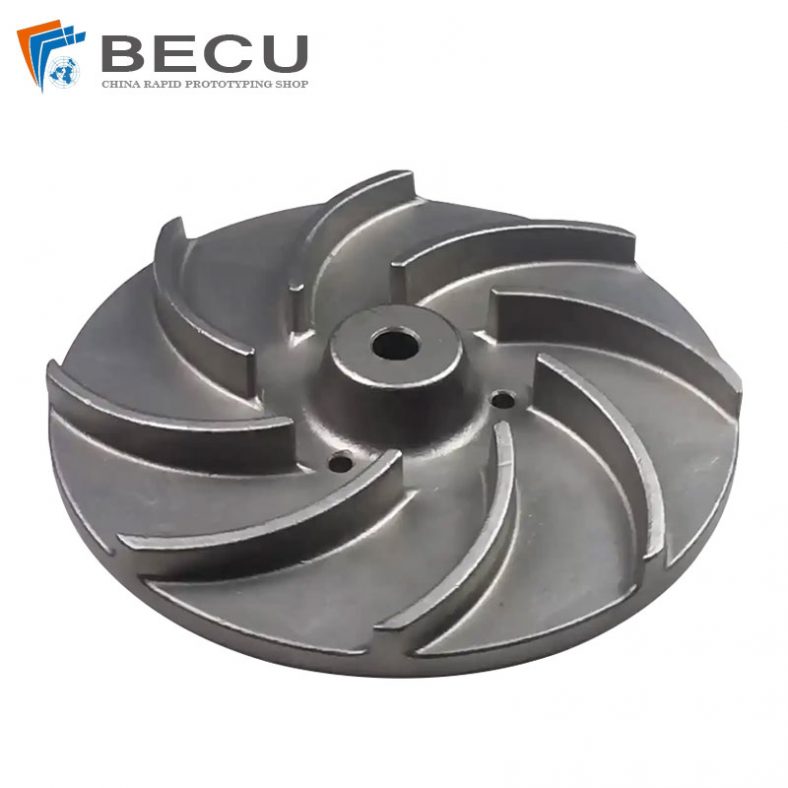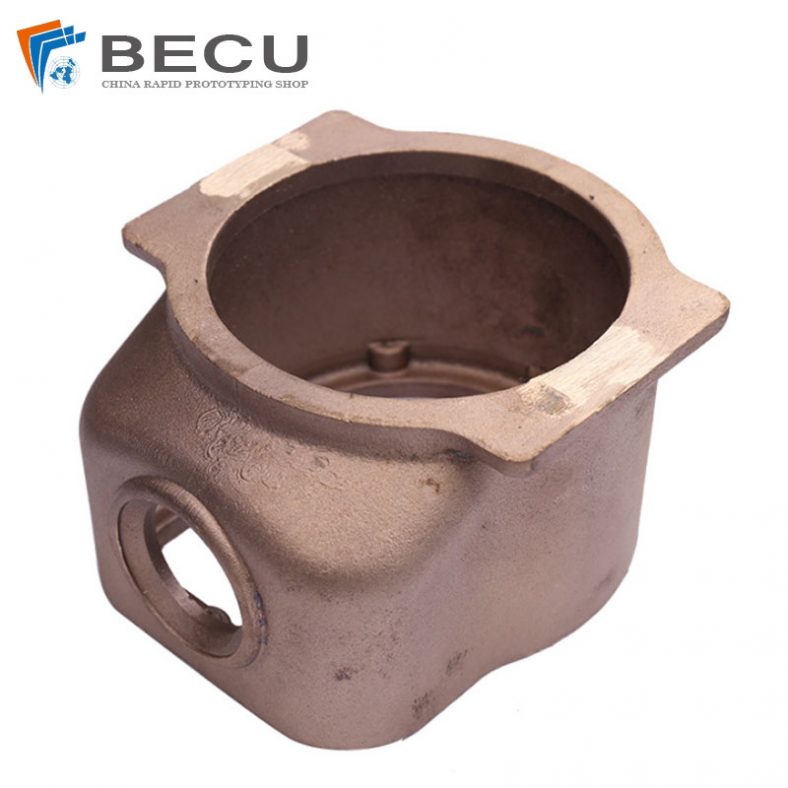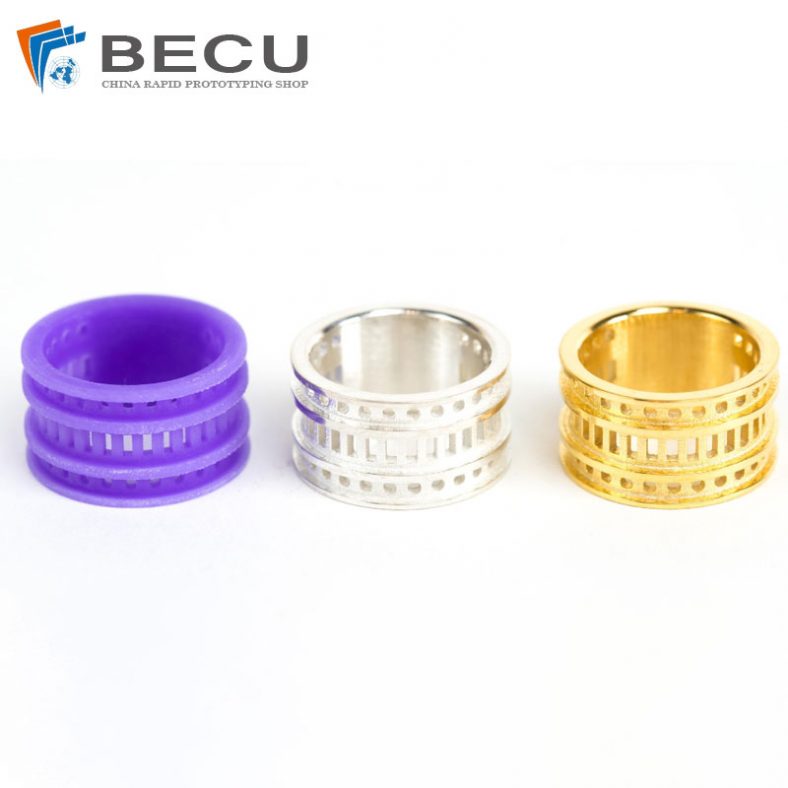
Casting is a fundamental process in the manufacturing industry that allows for the creation of intricate and complex metal objects. Two widely used casting methods are Lost Foam Casting and Lost Wax Casting.
While both techniques share similarities in their overall goals of producing detailed and complex shapes, they differ in their processes, materials, advantages, and applications.Both techniques have their strengths and weaknesses, and choosing the right one for a particular application depends on a variety of factors. In this article, we will delve into the intricacies of Lost Foam Casting and Lost Wax Casting, exploring their processes, advantages, disadvantages, and applications.
Lost Foam Casting: The Basics
Lost Foam Casting, also known as the full-mold process, is a precision casting technique that involves creating a foam pattern in the shape of the desired object. This foam pattern is coated with a refractory material, creating a mold. When molten metal is poured into the mold, the foam pattern vaporizes due to the high temperature, leaving behind the desired metal object. The key steps in the Lost Foam Casting process are pattern creation, mold assembly, pouring, and cooling.
Pattern Creation
The first step in Lost Foam Casting is creating the foam pattern. This can be done using various methods, including CNC milling, 3D printing, or manually carving the foam material. The foam pattern should be an exact replica of the desired metal object, capturing all the intricate details.
Mold Assembly
Once the foam pattern is ready, it is coated with a refractory material to create the mold. The refractory material can be a mixture of materials like sand, binder, and additives. The coated foam pattern is placed in a flask, and the remaining space in the flask is filled with unbonded sand or another refractory material. The sand provides support to the mold during the casting process.
Pouring
When the mold is assembled, it is ready for casting. Molten metal is poured into the mold, displacing the foam pattern. The heat of the metal causes the foam pattern to vaporize rapidly, creating a void in the mold that is filled by the molten metal. This results in the formation of the desired metal object.
Cooling and Removal
After the metal has solidified within the mold, the casting is allowed to cool. Once the metal has cooled sufficiently, the mold is broken apart, revealing the metal object inside. The sand used in the mold provides support and helps maintain the shape of the casting during cooling.
Lost Wax Casting: The Fundamentals
Lost Wax Casting, also known as investment casting, is another intricate casting method that has been used for centuries. This technique involves creating a wax or similar material pattern of the object to be cast. The pattern is then coated with a refractory material to create a mold. When the mold is heated, the wax pattern melts and is removed, leaving a cavity that is filled with molten metal. The key stages in Lost Wax Casting are pattern creation, mold creation, dewaxing, casting, and finishing.
Pattern Creation
The initial step in Lost Wax Casting is creating the wax pattern. Similar to Lost Foam Casting, the wax pattern can be generated using CNC milling, 3D printing, or manual techniques. It’s crucial to achieve precision and accuracy in the wax pattern to ensure the final metal object’s quality.
Mold Creation
The wax pattern is then coated with a ceramic slurry to create the mold. This slurry is built up layer by layer, allowing it to adhere to the pattern. After several layers of slurry are applied, the mold is allowed to dry and harden. This process is repeated until a robust and heat-resistant mold is formed around the wax pattern.
Dewaxing
Once the mold is ready, it is heated to melt and remove the wax pattern. This step is known as dewaxing or “lost wax,” as the wax is lost in the process. The mold is often heated gradually to avoid cracking due to the sudden temperature change.
Casting
With the wax pattern removed, the mold is now prepared for casting. Molten metal is poured into the mold, filling the void left by the wax pattern. The metal is allowed to cool and solidify within the mold.
Finishing
Once the metal has cooled and solidified, the mold is broken apart to reveal the metal object. The casting might require additional finishing processes like grinding, sanding, and polishing to achieve the desired surface finish and details.
A Comparative Analysis
Advantages of Lost Foam Casting
- Complex Shapes: Lost Foam Casting is well-suited for intricate and complex shapes due to the foam pattern’s ease of formation. Intricate designs that might be difficult to achieve with traditional molding methods can be easily replicated using foam patterns.
- Reduced Tooling Costs: The process of creating foam patterns is often more cost-effective than producing molds in other casting methods. This is particularly beneficial for short production runs or prototypes.
- Less Material Waste: Lost Foam Casting generates less waste compared to some other casting methods, as the foam pattern can be recycled and reused for multiple castings.
- Near Net Shape Casting: Lost Foam Casting often results in near net shape castings, which require minimal additional machining or finishing.
Disadvantages of Lost Foam Casting
- Material Limitations: Lost Foam Casting is not suitable for all types of metals. It works best with metals that have a lower melting point and good fluidity, such as aluminum and certain cast irons.
- Surface Finish: Achieving a high-quality surface finish can be challenging in Lost Foam Casting, especially for larger castings. This might require additional finishing processes.
- Foam Pattern Considerations: The foam pattern is delicate and can be easily damaged, requiring careful handling throughout the process.
- Environmental Concerns: The vaporization of foam patterns during casting can release potentially harmful emissions, raising environmental concerns.
Advantages of Lost Wax Casting
- High-Quality Surface Finish: Lost Wax Casting often yields superior surface finishes, making it suitable for objects that require intricate details and a smooth appearance.
- Versatility in Metals: Lost Wax Casting is compatible with a wide range of metals, including various alloys of steel, bronze, and precious metals like gold and silver.
- Dimensional Accuracy: The use of wax patterns allows for precise replication of intricate details, resulting in high dimensional accuracy.
- Reduced Machining: Lost Wax Casting can produce near net shape castings that require minimal additional machining, reducing overall production time and costs.
Disadvantages of Lost Wax Casting
- Labor-Intensive Mold Creation: The process of creating the ceramic mold can be time-consuming and labor-intensive, which can impact production timelines.
- Cost of Materials: The ceramic materials used for the mold can be expensive, contributing to higher overall production costs.
- Limited Pattern Reusability: Unlike foam patterns in Lost Foam Casting, wax patterns are typically consumed during the casting process, reducing reusability.
- Complex Process Control: Lost Wax Casting requires careful control of multiple variables, such as temperature and mold coating thickness, to achieve consistent results.
Applications of Lost Foam Casting and Lost Wax Casting
Lost Foam Casting Applications
- Automotive Industry: Lost Foam Casting is commonly used for manufacturing automotive engine components like cylinder heads and blocks due to its ability to create intricate cooling channels and complex shapes.
- Aerospace Industry: The aerospace sector benefits from Lost Foam Casting for producing lightweight and structurally complex parts like turbine blades and vanes.
- Industrial Machinery: The casting method is suitable for producing various industrial machinery components, such as pump housings, impellers, and gearbox casings.
- Art and Sculpture: The technique’s flexibility in replicating detailed forms makes it a preferred choice for artists and sculptors looking to create intricate metal sculptures.
Lost Wax Casting Applications
- Jewelry and Ornaments: Lost Wax Casting is widely used in the creation of jewelry and decorative ornaments, allowing for the precise reproduction of intricate designs.
- Medical and Dental Equipment: The medical industry uses Lost Wax Casting to manufacture items like surgical instruments and dental appliances that require high precision.
- Artistic Sculptures: Sculptors often use Lost Wax Casting to bring their intricate and detailed artistic creations to life in various metals.
- Prototyping: Lost Wax Casting can be employed for rapid prototyping of metal components, allowing for quick design iterations and testing.
The Diffenerce Of Lost Foam Casting and Lost Wax Casting
Lost Foam Casting and Lost Wax Casting are two distinct methods of creating metal objects through casting processes. While they share similarities in terms of producing intricate and detailed shapes, they differ in their processes, materials, advantages, and applications.Here’s a comparison chart table outlining the key differences between Lost Foam Casting and Lost Wax Casting:
| Aspect | Lost Foam Casting | Lost Wax Casting |
|---|---|---|
| Pattern Material | Foam | Wax or similar materials |
| Mold Material | Refractory material | Ceramic slurry |
| Process Complexity | Simpler process | More complex process |
| Surface Finish | Challenging for high quality | Known for superior finishes |
| Material Compatibility | Limited to certain metals | Wide range of metal compatibility |
| Environmental Impact | Gaseous emissions during foam vaporization | No vaporization emissions |
| Application Focus | Automotive, industrial components | Jewelry, art, precision components |
| Tooling Costs | Reduced due to foam pattern creation | Higher due to ceramic mold materials |
| Waste Generation | Less waste due to foam pattern reusability | Wax patterns are often consumed |
| Dimensional Accuracy | Near net shape possible | Near net shape possible |
| Labor-Intensive Steps | Minimal | Mold creation, dewaxing |
| Production Costs | Potentially lower due to reduced tooling costs | Potentially higher due to mold materials |
| Detail Replication | Limited by foam pattern intricacy | Excellent for intricate designs |
| Metal Compatibility | Limited to metals with lower melting points and good fluidity | Versatile in metal choices |
| Object Complexity | Suitable for complex shapes | Suitable for intricate details |
Both Lost Foam Casting and Lost Wax Casting are sophisticated techniques that offer unique advantages and challenges. Lost Foam Casting excels in creating complex shapes and reducing material waste, while Lost Wax Casting provides high-quality surface finishes and versatility in metal choices. The decision to use one method over the other depends on factors such as the desired object’s complexity, material requirements, production volume, and budget constraints. As technology continues to advance, these casting techniques are likely to evolve further, offering new possibilities for creating intricate and durable metal objects across various industries.
The Detail Of BE-CU Investment Casting Company

In order to meet the mass production requirements of some customers and reduce the cost, we work with our suppliers to assist your project. BE-CU investment casting service can reduce the custom parts time and cost of CNC machining parts, as we can manufacture a large number of prototypes in batch quickly and modify the appearance with CNC techniques to deliver the final desired parts. Whether you want to look for an lost wax castings manufacturer casting stainless steel, carbon steel, aluminum, or brass, professional technicians will perform investing casting process with a wide variety of metals, and be able to offer complex detail, smooth surface finish, and high definition in an economic way for clients.BE-CU.COM investment casting parts are used across broad fields, such as energy, automotive, gas, and oil, food, etc. ISO 9001 certification and multiple-stage quality inspection implementation will ensure the quality and performance of the lost wax casting products to be delivered.




